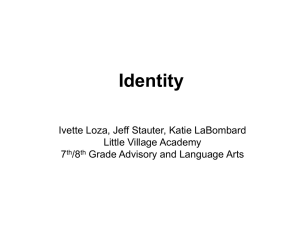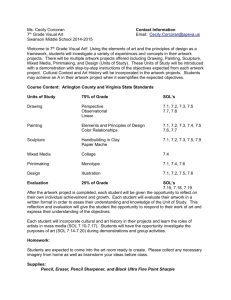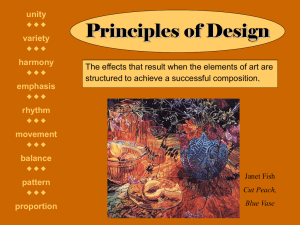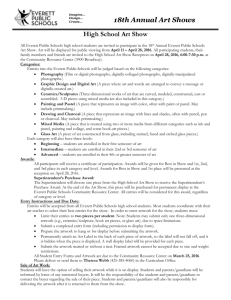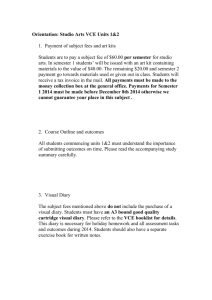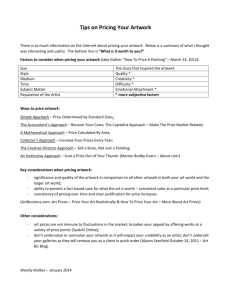artwork and Native American
advertisement
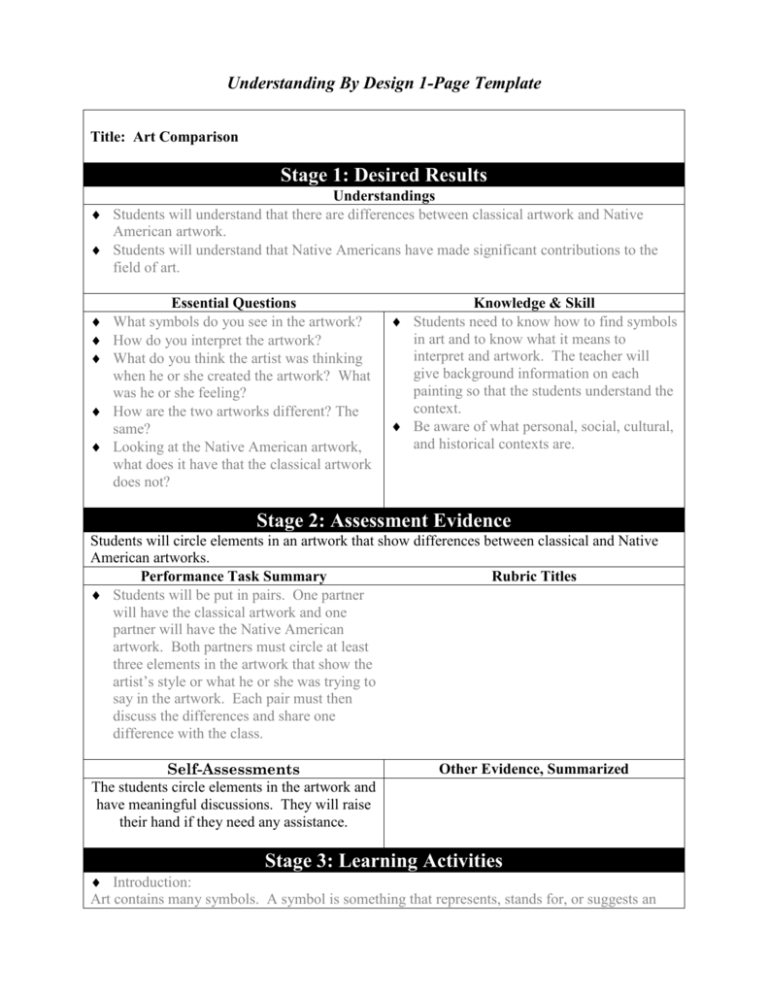
Understanding By Design 1-Page Template Title: Art Comparison Stage 1: Desired Results Understandings Students will understand that there are differences between classical artwork and Native American artwork. Students will understand that Native Americans have made significant contributions to the field of art. Essential Questions What symbols do you see in the artwork? How do you interpret the artwork? What do you think the artist was thinking when he or she created the artwork? What was he or she feeling? How are the two artworks different? The same? Looking at the Native American artwork, what does it have that the classical artwork does not? Knowledge & Skill Students need to know how to find symbols in art and to know what it means to interpret and artwork. The teacher will give background information on each painting so that the students understand the context. Be aware of what personal, social, cultural, and historical contexts are. Stage 2: Assessment Evidence Students will circle elements in an artwork that show differences between classical and Native American artworks. Performance Task Summary Rubric Titles Students will be put in pairs. One partner will have the classical artwork and one partner will have the Native American artwork. Both partners must circle at least three elements in the artwork that show the artist’s style or what he or she was trying to say in the artwork. Each pair must then discuss the differences and share one difference with the class. Self-Assessments The students circle elements in the artwork and have meaningful discussions. They will raise their hand if they need any assistance. Other Evidence, Summarized Stage 3: Learning Activities Introduction: Art contains many symbols. A symbol is something that represents, stands for, or suggests an idea, visual image, belief, action, or thing. For example, a red octagon is a symbol for “stop.” In addition, a red rose may symbolize love or passion. Could someone think of another example of a symbol? Lesson: 1. Today, we are going to compare a classical artwork with a Native American artwork. (Present the first image of a classical artwork.) The title is “American Gothic” by Grant Wood. The work was created in 1930 and came out at the start of the great depression, which was a time in which everyone was struggling with money in America. The work was viewed as the symbol of a steadfast American spirit. The Native American artwork is called “Father and Son” and is created by Mac Coyote, a member of the Navajo tribe. His inspiration comes from God, his wife, and his children. He uses a lot of nature, animals, and people in his work. 2. Students will be split into pairs and each pair will be given a sheet of paper containing each artwork that was explained above. One partner will be instructed to circle any symbols in the classical artwork and one partner will circle symbols in the Native American artwork. Students will then discuss differences between the two works and will be instructed to have something ready to share with the class about the differences. Once all the students have finished discussion, each group will share a difference between the two artworks or any symbols that they observed in the artworks. If students missed any symbols, the teacher will share them with the class or suggest differences. ---The woman is dressed in colonial print. The couple is in the traditional roles of men and women. The man’s pitchfork symbolizes hard labor. The flowers over the woman’s right shoulder represent domesticity. Conclusion: The class will have a discussion based on the following questions: What symbols do you see in the artwork? How do you interpret the artwork? What do you think the artist was thinking when he or she created the artwork? What was he or she feeling? How are the two artworks different? The same? Looking at the Native American artwork, what does it have that the classical artwork does not? The teacher will initiate a discussion about the contributions that Native Americans have made to art at the end. Contributions: Abstract art Nature Symbols Animals Spirituality Shapes and geometric designs



